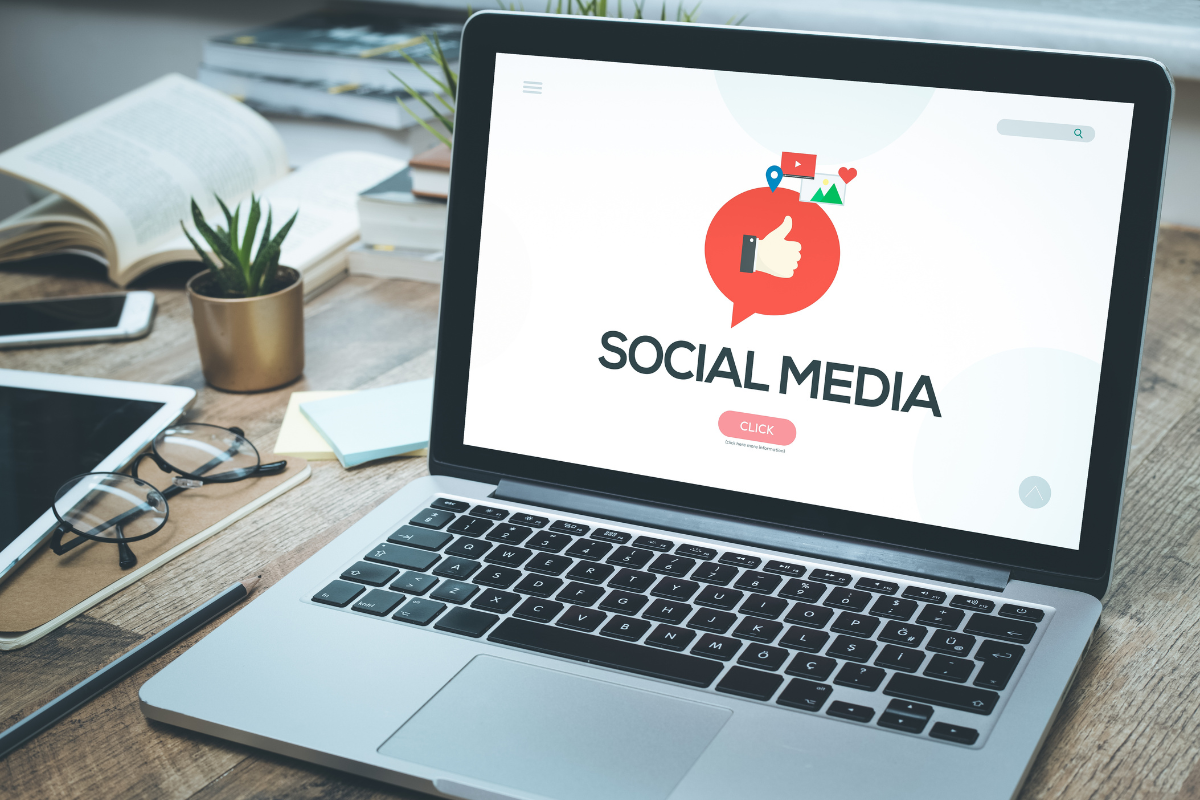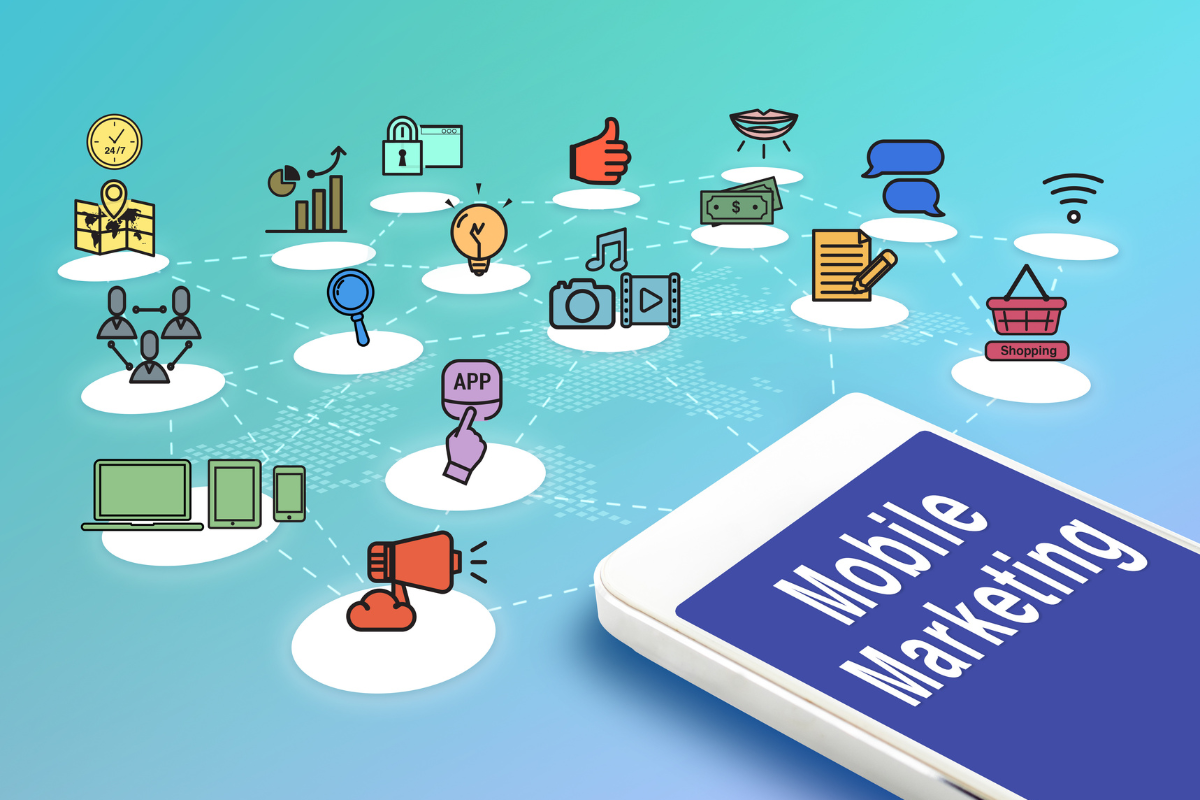
Post Title
What Is Social Media Monitoring and Why It Matters
October 15, 2024
In a world where almost everyone is online, small businesses have an amazing opportunity—but also a challenge.
They need to stand out and keep a positive reputation, especially as people turn to the internet to share their experiences, good or bad.
One effective way for small businesses to navigate this landscape is through social media monitoring.
So, what exactly is social media monitoring, and why is it important for your business?
What is Social Media Monitoring?

Social media monitoring is simply the practice of tracking what's being said about your business, your industry, and even your competitors on social media. It's about listening in on real-time conversations, gaining insights into customer preferences, and staying updated on trends that affect your industry.
Imagine knowing how your customers feel about your products the moment they talk about them online. That’s what social media monitoring allows you to do—stay tuned to what matters to your audience.
But what else are the benefits of social media monitoring?
Why Does Social Media Monitoring Matter for Small Businesses?
For small business owners, especially those in fields like home services or professional services, social media monitoring offers a competitive edge. Here’s why:
- Enhancing Your Brand Reputation: It lets you catch and respond to negative comments or misinformation quickly. If someone posts a concern, you can address it directly, showing that you care about your customers' experiences.
- Improving Customer Service: With real-time monitoring, you can respond to customer inquiries or resolve complaints on the spot, which can go a long way in building customer loyalty and trust.
- Boosting Marketing Effectiveness: By analyzing what content resonates with your audience, you can tailor your marketing efforts to deliver content that truly engages them, ultimately driving more conversions and loyalty.
How Does Social Media Monitoring Work?

Social media monitoring is powered by various tools and techniques. Many of these tools make it easy for small businesses to manage and analyze their online presence. Take Visio Reputation Management, for example—a tool designed specifically for small business needs.
Here’s what it offers:
- Real-Time Monitoring: This feature lets you keep tabs on brand mentions and trending topics as they unfold.
- Comprehensive Analytics: From audience behavior to sentiment analysis, you can get a clear picture of how people feel about your business.
- Competitor Analysis: Knowing what your competitors are up to allows you to spot opportunities to differentiate your brand.
Real-Life Examples of Social Media Monitoring in Action
Small businesses that use social media monitoring effectively can see big results. Here are a couple of examples:
- Local Café: A local café regularly monitored customer feedback on social media and noticed recurring complaints about their takeout service. By addressing this issue, they improved their service and saw a boost in customer satisfaction and repeat business.
- Home Cleaning Service: A home cleaning company discovered that eco-friendly products were trending and used this insight to promote their green cleaning options. This attracted new clients interested in sustainable choices and helped strengthen their brand image.
Tips for Effective Social Media Monitoring
Want to make the most of monitoring social media for your business? Here are some quick tips:
- Set Clear Objectives: Are you looking to improve customer service, enhance your reputation, or both? Knowing your goals will make your efforts more focused and effective.
- Choose the Right Tools: Not all monitoring tools are the same. Go for tools that offer real-time monitoring, analytics, and competitor insights tailored for small businesses.
- Engage with Your Audience: Use the insights you gather to respond to your audience’s needs. Answer their questions, address concerns, and show them that you’re listening.
- Stay Consistent: Make social media monitoring a regular part of your routine so you’re always aware of the conversations surrounding your business.
How to Measure the Success of Your Monitoring Efforts?

Evaluate the effectiveness of your social media monitoring by tracking these key metrics. Use these metrics to assess the impact of your monitoring efforts and refine your strategy for better results.
- Engagement Rate: Measure likes, comments, shares, and overall interaction with your content, indicating how well your audience is connecting with your posts.
- Brand Mentions: Track the frequency and context of mentions to assess brand visibility and awareness across platforms.
- Sentiment Analysis: Analyze the tone (positive, neutral, or negative) of conversations around your brand, helping you understand public perception.
- Response Time: Measure how quickly your team responds to customer inquiries and comments, reflecting your brand’s attentiveness and customer service quality.
- Customer Satisfaction (CSAT) Scores: Surveys or feedback forms help you gauge customer satisfaction with your responses and interactions.
- Audience Growth: Track the increase in followers or fans over time, indicating how well your brand is resonating with new audiences.
- Share of Voice: Compare the volume of your brand mentions to competitors, providing insights into your market presence.
- Conversion Rate: Measure how effectively social media interactions drive desired actions, like clicks to your website or product purchases.
Is a Team Necessary for Effective Monitoring?
Whether you need a dedicated social media team depends on your business goals, resources, and audience engagement. Here’s what to consider:
- Time and Resources: A team can efficiently handle the time-intensive tasks of monitoring, responding, and analyzing social media activity, especially if your brand is highly active online.
- Real-Time Responsiveness: Having a team allows for quick responses to customer inquiries and timely management of both positive and negative feedback, maintaining a strong brand presence.
- Audience Engagement: For brands with large or highly engaged audiences, a team can better manage high volumes of comments, mentions, and direct messages.
- Expertise in Strategy: A team often includes specialists in content, analytics, and customer engagement, helping create a well-rounded monitoring and response strategy.
- Data Analysis and Reporting: Teams are better equipped to track and analyze data over time, providing insights that can improve future campaigns and brand perception.
- Scaling with Growth: As your brand grows, a team can adapt to increased monitoring needs and ensure consistency in engagement and brand messaging.
For smaller businesses, a single person with the right tools may be able to handle monitoring effectively. However, as engagement grows, a dedicated team can elevate the quality and efficiency of social media management.
Overlooked Aspects of Social Media Monitoring

While many articles and guides discuss the basics of social media monitoring, several important aspects are often overlooked. Here are some less talked-about but valuable insights on social media monitoring:
1. Monitoring Beyond Brand Mentions: Uncovering Niche Trends and Micro-Influencers
- Many businesses focus solely on direct mentions or hashtags related to their brand, but monitoring should extend to industry-specific trends, niche conversations, and emerging micro-influencers. Tapping into these smaller yet influential voices helps brands find potential collaborators and discover new audience segments that aren’t directly interacting with them yet.
2. Understanding Emotional and Contextual Sentiment Analysis
- Basic sentiment analysis categorizes mentions as positive, negative, or neutral. However, truly effective monitoring looks at the nuances of emotion—like frustration, excitement, or sarcasm—to grasp customer feelings and pain points more accurately. This deeper level of sentiment analysis can improve customer service responses and help brands align messaging with audience moods and interests.
3. Competitive Positioning Through Audience Overlap Analysis
- Social media monitoring tools can reveal not just how your audience perceives your brand, but also where audiences intersect with competitors. By understanding shared interests, demographics, and engagement habits, you can refine your positioning strategy, differentiate your brand, and find untapped opportunities that align with your unique value proposition.
4. Identifying Early Signs of Brand Crises
- Most brands react to negative comments, but proactive social media monitoring can detect the early signs of a crisis. Recognizing patterns in conversation, such as sudden spikes in negative sentiment or recurring complaints, allows you to address potential issues before they escalate, mitigating damage to your reputation.
5. Tracking "Dark Social" Mentions
- Much of today’s social media activity happens privately through direct messages, closed groups, and encrypted apps, collectively referred to as "dark social." While it’s challenging to monitor directly, tools and tactics can estimate traffic from these sources, giving you a clearer picture of where conversations about your brand are happening beyond public posts.
6. Measuring Impact Through Customer Journey Mapping
- Monitoring tools often focus on isolated metrics like mentions or engagement. However, tying social media interactions to the customer journey provides a more strategic view. Mapping where social media influences awareness, consideration, or conversion stages can show how engagement directly supports business goals.
7. Monitoring Visual Mentions with Image Recognition
- Increasingly, customers post pictures of brands without tagging or mentioning them explicitly. Some advanced tools offer image recognition features that can detect your logo or products in photos, allowing you to track these visual mentions and engage with users who are already organically sharing your brand.
8. Ethical Implications of Social Media Monitoring
- While monitoring provides valuable insights, businesses should consider privacy and ethical concerns. It’s essential to establish transparent policies, ensuring that monitoring efforts respect user privacy and abide by platform guidelines, especially when using personal or behavioral data for insights.
9. Integrating Monitoring with Customer Relationship Management (CRM)
- Combining social media monitoring with CRM software helps businesses create a seamless customer experience. By linking social interactions to customer profiles, you can view purchase history, preferences, and previous interactions, allowing for highly personalized and effective customer service responses.
10. Analyzing Feedback to Guide Product or Service Improvements
- Social media feedback often reveals product flaws, desired features, or service gaps that aren’t caught through traditional customer support channels. Leveraging monitoring insights to guide product development or service adjustments can significantly enhance customer satisfaction and loyalty.
11. Evaluating Long-Term Brand Loyalty and Advocacy
- While short-term metrics like likes and shares are common, tracking social media monitoring over time can provide insights into brand loyalty and advocacy. Identifying long-term patterns in mentions or observing repeat brand supporters can indicate the effectiveness of brand loyalty initiatives and help foster stronger customer relationships.
12. Engaging in “Social Listening” to Influence Future Trends
- Beyond monitoring what’s currently happening, “social listening” helps brands identify emerging topics and predict future trends. By analyzing what’s gaining traction within niche communities or sectors, you can position your brand as a trendsetter or early adopter, which can give you a competitive edge.
Implementing these lesser-discussed aspects of social media monitoring will deepen your brand’s insights, improve customer relations, and provide a strategic advantage. By expanding beyond typical metrics, your business can build a well-rounded, proactive approach to social media that’s better equipped to handle today’s complex digital landscape.
Social Media Monitoring: What Every Business Owner Should Know
Discover essential answers to common questions about social media monitoring, from boosting brand reputation to improving customer engagement and staying competitive in your industry.
Q1: What’s the difference between social media monitoring and social listening?
A1: While both involve tracking social media conversations, social media monitoring focuses on gathering and analyzing data on mentions and feedback, usually for immediate response. Social listening, on the other hand, goes a step further by analyzing these insights to understand broader industry trends, customer sentiment, and long-term strategies.
Q2: What social media monitoring tools are commonly used?
A2: There are several tools, each offering unique features for small businesses. One of the most popular is Visio Social, which uses AI-powered social media management software, and Visio Reputation Management which monitors, manages, and responds to public feedback to protect and enhance your online image.
Q3: How often should I monitor my social media channels?
A3: Consistent monitoring is essential. Aim to check your social channels daily, if possible, to stay informed and responsive. This ensures you don’t miss any urgent feedback, trending topics, or customer inquiries.
Q4: Can social media monitoring help with customer service?
A4: Absolutely. It enables you to spot customer questions or complaints quickly, allowing you to address issues and provide support in real time. This immediate responsiveness can significantly improve customer satisfaction and loyalty.
Q5: How can monitoring social media improve your marketing strategies?
A5: By analyzing which content resonates most with your audience, social media monitoring helps refine your marketing approach. You can identify trends, optimize messaging, and discover topics that engage your audience, leading to better reach and conversions.
Q6: Is social media monitoring effective for tracking competitors?
A6: Yes. Monitoring competitor activities helps you understand what works well for others in your industry, allowing you to adapt your strategies. It also highlights any gaps in the market that your business can fill.
Take Control of Your Brand's Reputation—Reach Out to Visio SEO Today!

Your brand's reputation is one of its most valuable assets, and staying ahead in today's fast-paced digital world requires proactive monitoring and management. With Visio SEO's expertise in social media monitoring and reputation management, you can safeguard your brand from potential risks, respond to customer feedback in real time, and stay informed about industry trends.
Don’t leave your reputation to chance—reach out to Visio SEO and take control of your brand's future!
Contact Us
Contact Us
We will get back to you as soon as possible
Please try again later
Subscribe to Our Newsletter
Stay up to date with our latest offers and promotions by signing up now!
Contact Us
We will get back to you as soon as possible.
Please try again later.

We are the premier digital marketing solution in Elgin. Contact us today to get your free, no-obligation consultation!










